This year, Singapore commemorates the 80th anniversary of the Fall of Singapore and the Japanese Occupation. Over the course of this week, Mothership will be republishing stories that highlight the key events that marked one of the darkest moments in Singapore's history.
During the Japanese Occupation, the Imperial Japanese Army held numerous prisoners of war (POWs) and internees at Changi Prison and several camps.
Former police inspector William R.M. Haxworth, an internee at Changi Prison and Sime Road Camp, was among them.
During his time there, he secretly drew over 300 small paintings and sketches.
His artworks give us a glimpse into life in the POW camps. They not only document the difficult living conditions but often provide a light-hearted (and sometimes humorous) spin on the prisoners' daily lives.
People came to know about Haxworth and his drawings when his wife donated his entire set of sketches to the National Archives of Singapore in 1986.
We share some of them here.
Resourcefulness
Haxworth's drawings are proof of resilience and resourcefulness shown by people in times of war and shortage.
When faced with a lack of art materials, Haxworth used whatever he could lay his hands on to create various sketches and watercolour paintings.
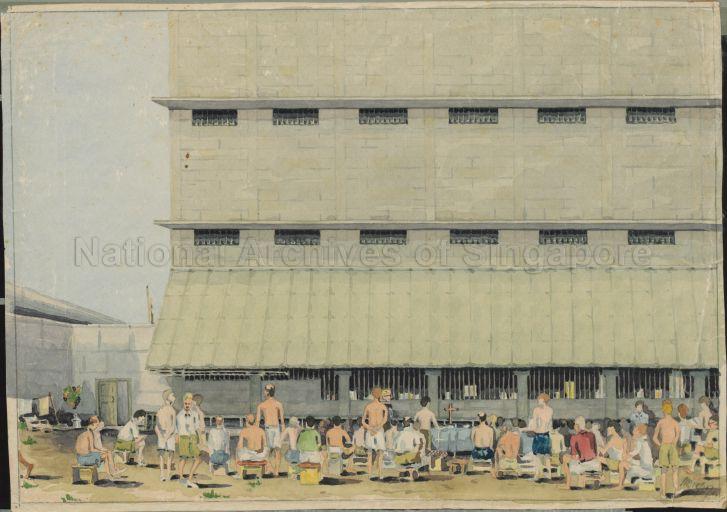 "Internees at Changi Prison," from NAS
"Internees at Changi Prison," from NAS
His drawings also document the resourcefulness of the internees regarding footwear.
For instance, bits of a shoe would be cut off if the shoe size was too small:
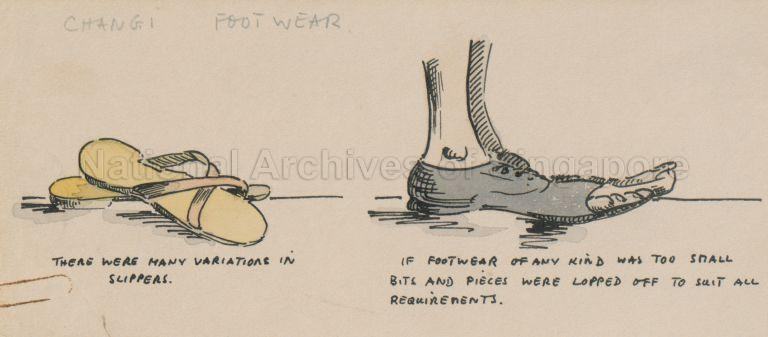 Photo from NAS
Photo from NAS
While some made modifications to canvas shoes "for the purpose of coolness," there were also some who did not wear any shoes.
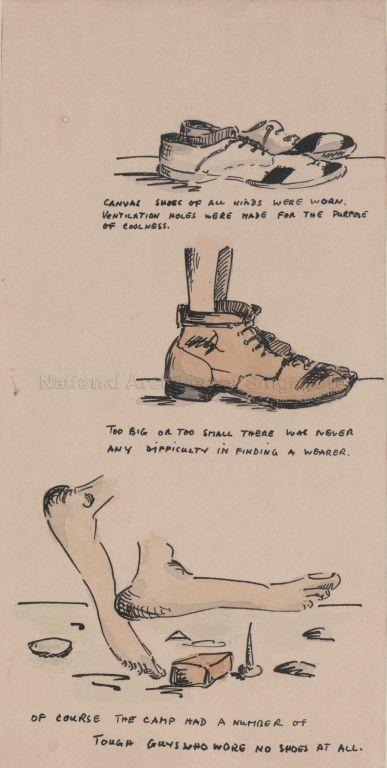 Photo from NAS
Photo from NAS
Harsh conditions
Haxworth's drawings serve as a record of life as an internee, including the harsh conditions that they lived through.
For instance, in a piece called "Changi Comforts", he drew a series of simple objects which were considered to be objects of comfort during that time.
These included stools, fruits and cigarettes — things that could easily be taken for granted in everyday life.
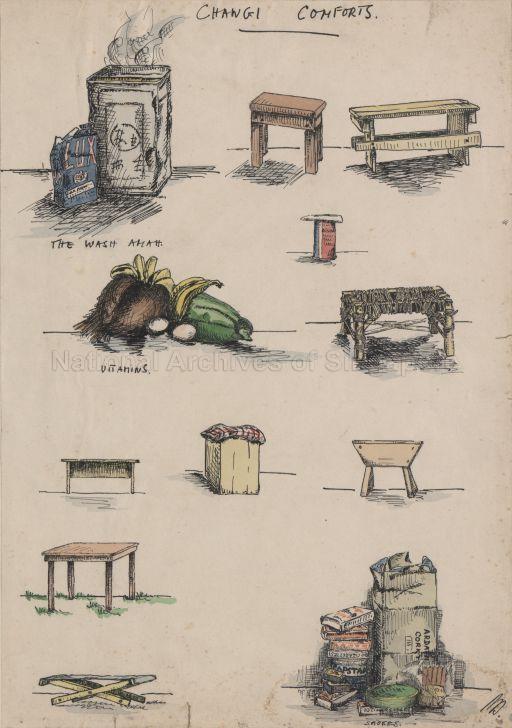 Photo from NAS
Photo from NAS
Internees also had to endure bed bug infestations.
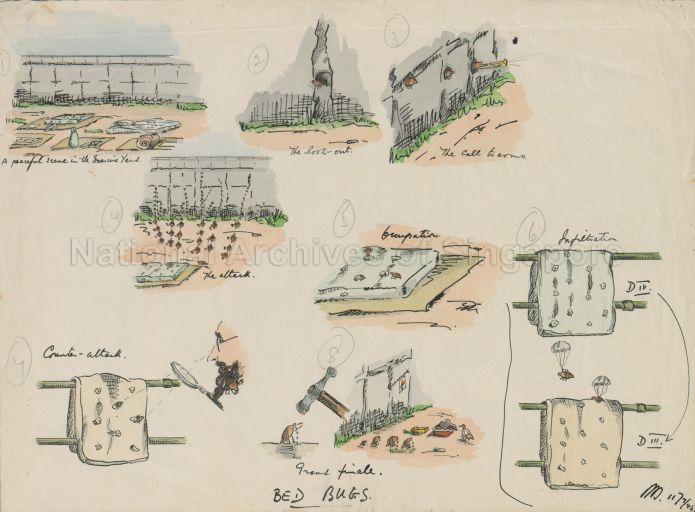 Photo from NAS
Photo from NAS
Haxworth also stated that the communal toilets had many advantages, but "only those living adjacent to or nearby fully appreciated the disadvantages." Due to overcrowding and unhygienic conditions, one can only imagine the state of the communal toilets.
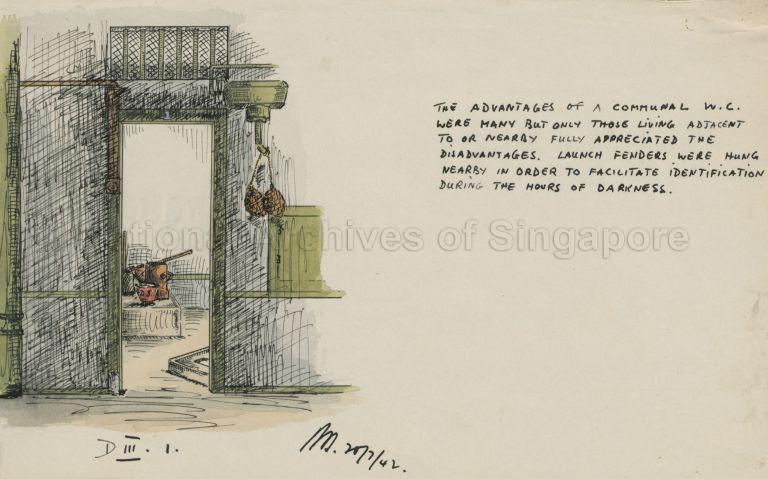 Photo from NAS
Photo from NAS
Due to the rough living conditions, many of the internees transformed from gaunt figures to mere skin and bones by the end of the war.
Mischievous spin
Despite these circumstances, Haxworth managed to find humour in many situations. Some of his drawings took a lighthearted approach. One drawing was of internees getting bitten by sea lice:
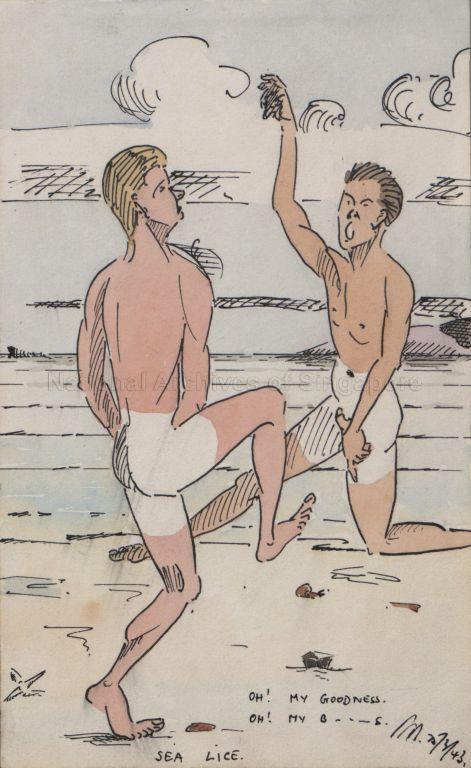 Photo from NAS
Photo from NAS
Another cheekily portrayed the back view of a naked internee, whom Haxworth called "the internee who would not conform":
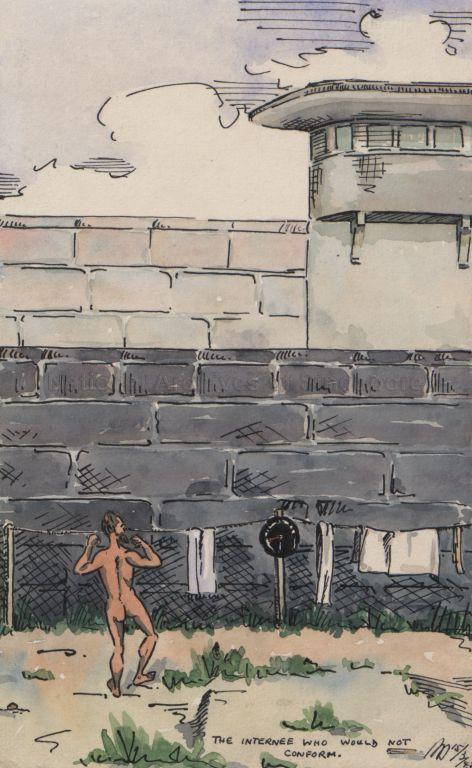 Photo from NAS
Photo from NAS
In a piece called "Confessions of a member of the kitchen staff", Haxworth revealed that internees who worked in the kitchen secretly plundered the food stock.
In fact, they were bribed (with food) to not overdo it.
 Photo from NAS
Photo from NAS
Haxworth's creative artworks are a testament to the resilience and adaptability of the people who survived the difficult conditions of war.
You can view his works at the National Archives Online.
Top photos adapted from sketchs by William Haxwoth, via NAS. This article was originally published as "British prisoner's artworks offer rare lighthearted take on life under the Japanese" in 2017.
If you like what you read, follow us on Facebook, Instagram, Twitter and Telegram to get the latest updates.

